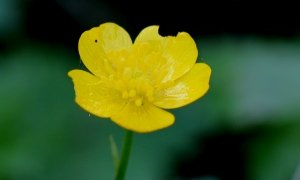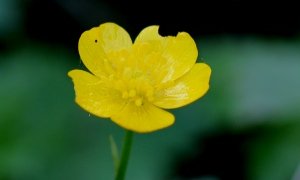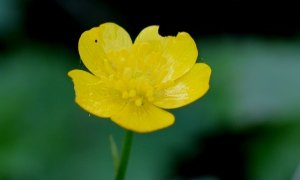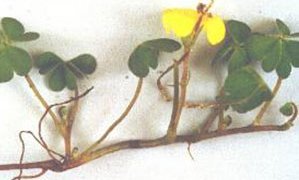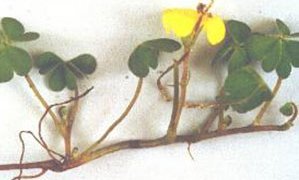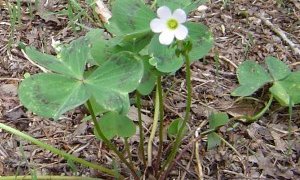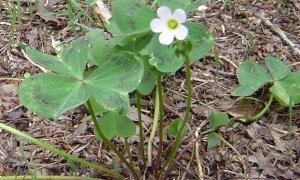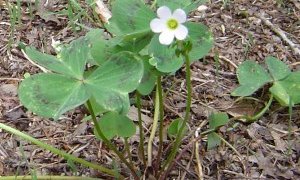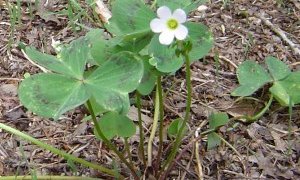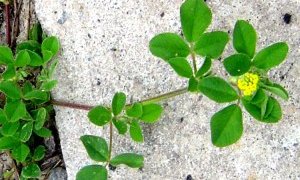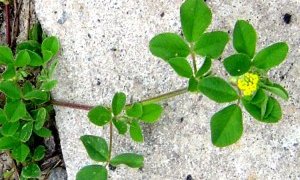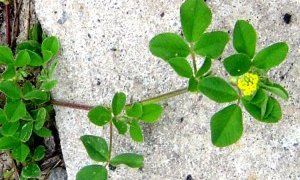Botanical name: Trifolium repens
Family name: Fabaceae
Overview
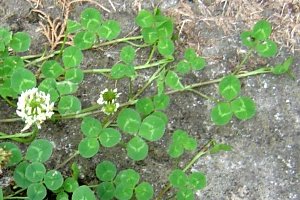
White clover.
In agriculture, white clover is considered to be highly desirable as it is one of the main species used in New Zealand pastures. It provides high-quality feed for animals, it fixes nitrogen because it is a legume, and it is tolerant of grazing and trampling.
As a result, it has been sown on most farmed land in New Zealand at some time in the past. It is commonly found in land which it is now used for horticulture where is often no longer wanted, and therefore is considered a weed.
It is commonly found in turf where its white flowers attract bees and result in bee-stings for people walking across lawns in bare feet. It can be competitive against many crop plants. It is reasonably tolerant of glyphosate and paraquat, so soon builds up in areas where these herbicides are commonly used.
Distinguishing features
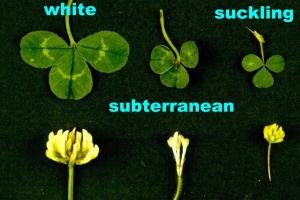
Comparison of the leaves and flowers of clover species.
As with other clover species, white clover has leaves that are composed of three leaflets. It is distinguished from most other legumes because of its stolon system and its white flowers which are clusters of many florets.
White clover leaves have no hairs, unlike red clover and subterranean clover, and often have white markings on them. Suckling clover is also often found in lawns and is not hairy either. Its leaves tend to be much smaller and it has small flower heads composed of yellow florets.
Strawberry clover can be difficult to differentiate from white clover in those parts of the country where this grows (mainly alkaline soils), as it has no hairs, has stolons and has flower heads much the same size as white clover.
The leaflet shape of a strawberry clover is not quite as wide as a white clover when comparing length with width. Following flowering, a strawberry clover forms a creamy bladder-like seed head not dissimilar to strawberry fruits (hence its name), which doesn’t happen with white clover.
Control
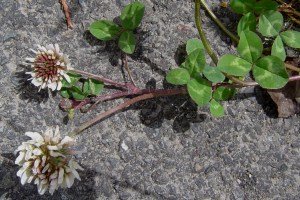
White clover in flower.
White clover is not controlled well by glyphosate or paraquat. However, other broad-spectrum herbicides which do control it well are amitrole and glufosinate. For preparing seed beds from old pastures, tribenuron often gets added to glyphosate to improve control of white clover.
For weed control in waste places, metsulfuron is often added to glyphosate to improve control of white clover plus other weeds not killed by glyphosate. In lawns, selective herbicides containing chemicals such as clopyralid, dicamba, triclopyr or picloram will give good control.
Weeds with stolons tend to be more susceptible to cultivation than weeds with rhizomes and tap roots, though shallow cultivation will often not be very successful. Although we can struggle to control white clover in some situations, we also go through a lot of trouble not to harm white clover when killing weeds such as thistles in pastures, because of the benefits from clover.
The least harmful herbicides for clovers in pastures are MCPB and flumetsulam, though these often won’t control the weeds that are causing problems. Using a low rate of 2,4-D tends to suppress white clover less than MCPA, though low rates of 2,4-D can only be used if the timing is right so that weeds are small enough to be susceptible.
Pastures should never be boom-sprayed with herbicides such as clopyralid or aminopyralid if trying to avoid damage to white clover.
